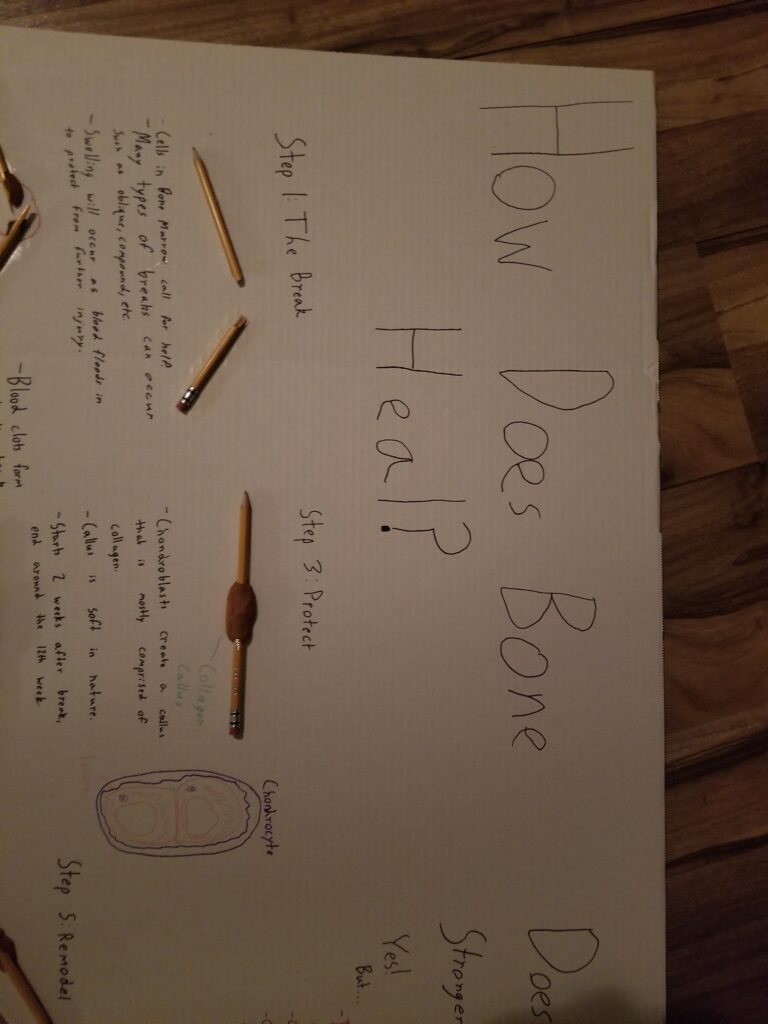
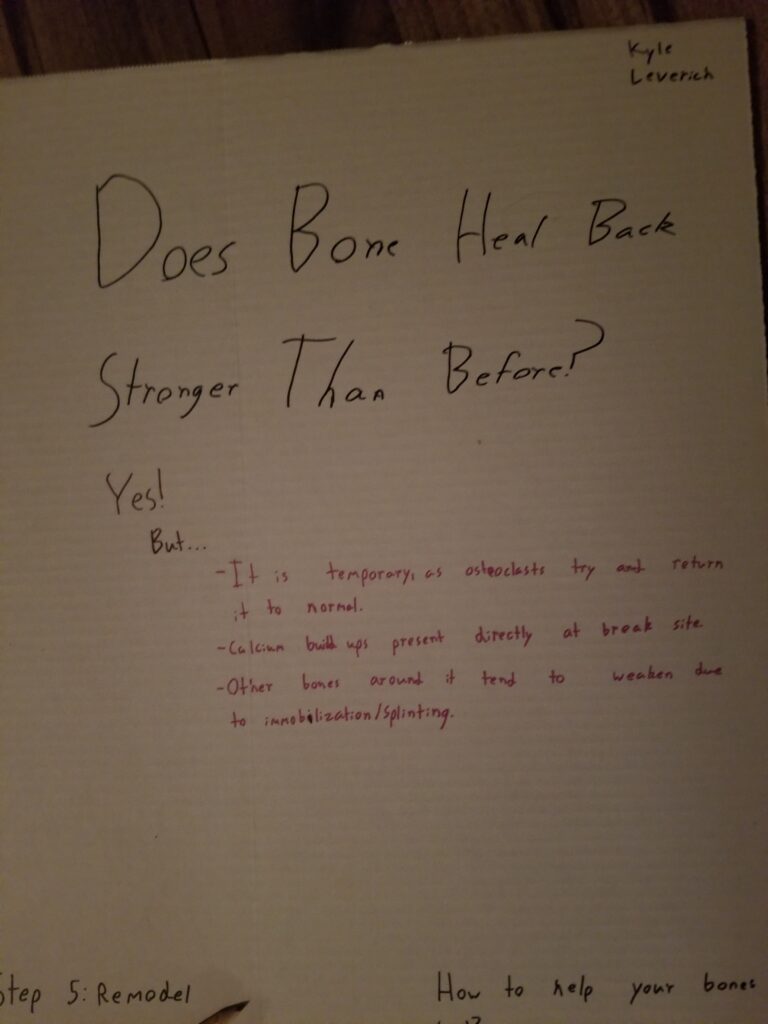
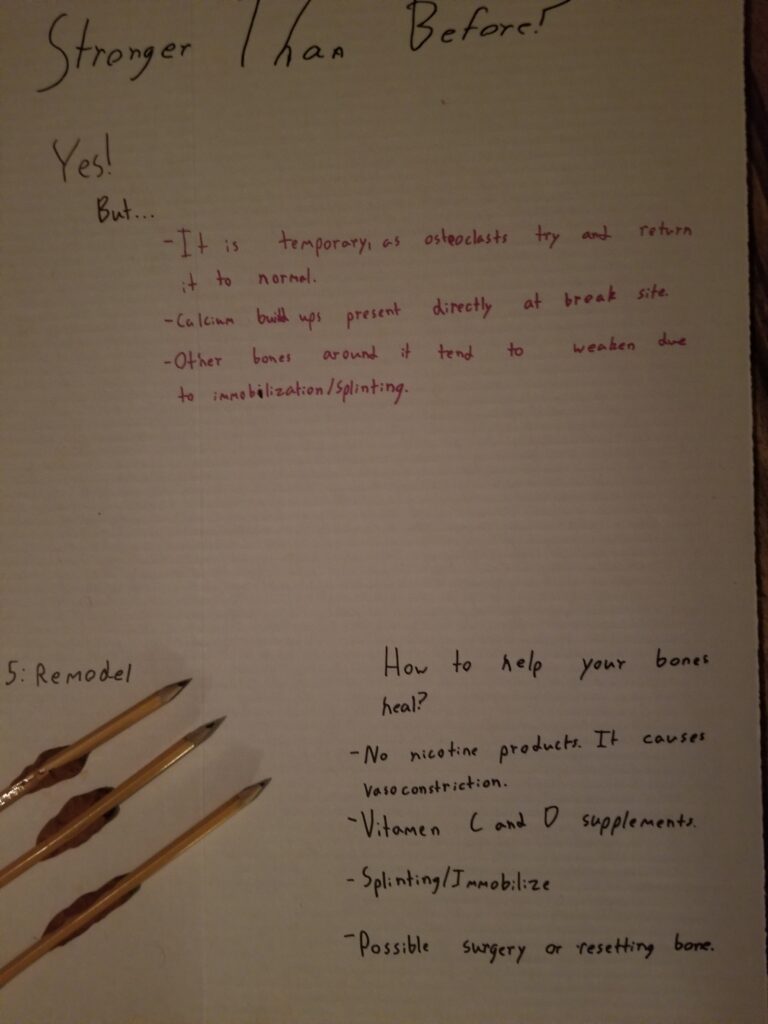

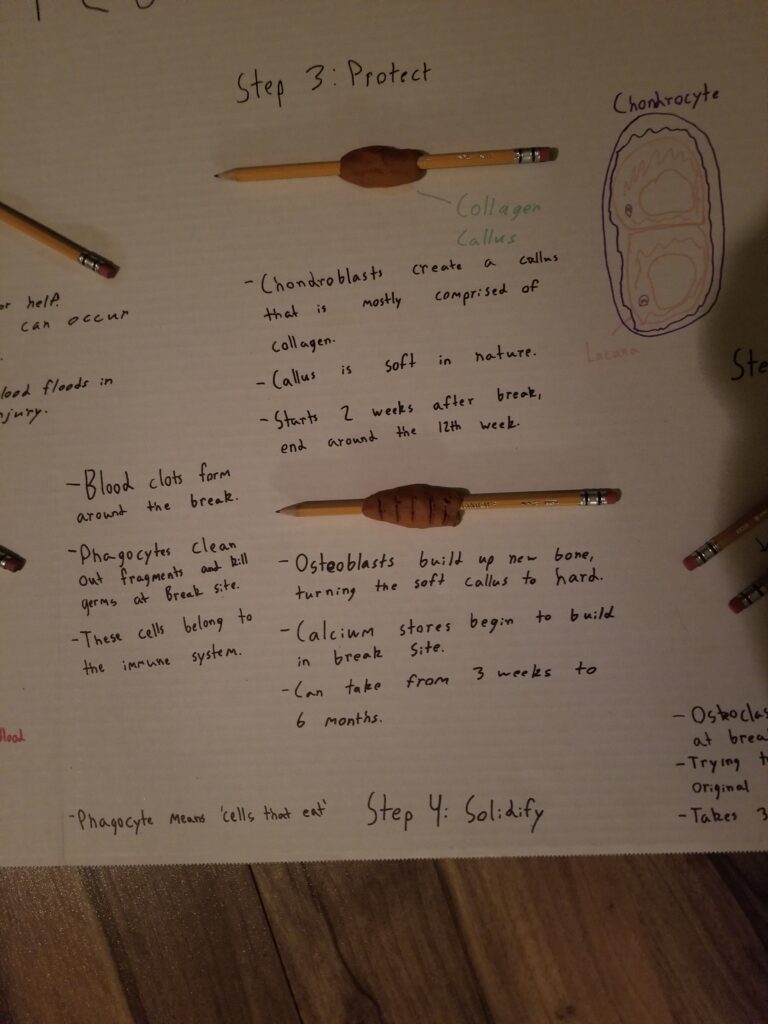
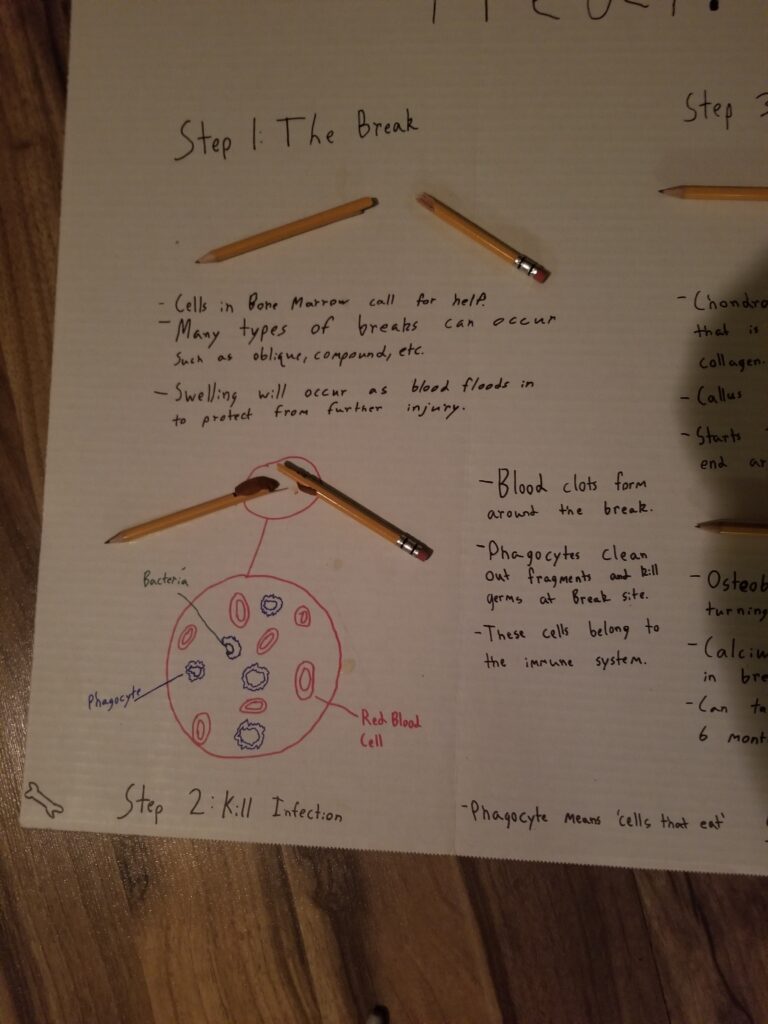
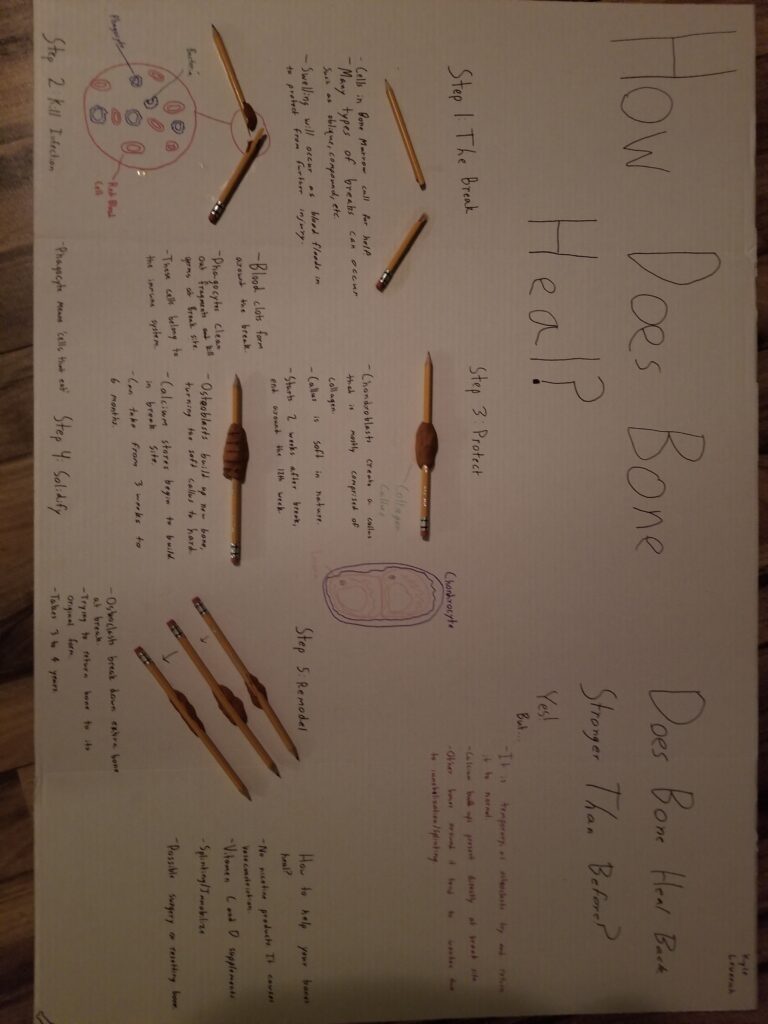
The goal of my project is to show the process of bone healing in the body once it has been broken. The poster board, converted to a diagram showing the steps in the process, has facts and descriptions written on it for each step of the way. My objective is to show people in a summarized piece on how the process occurs, down to a cellular level. I also wanted to address a common thing I heard growing up, and that is does a bone actually heal stronger after it is broken then it was before? You would be surprised, or not so surprised, by the answer to that.
In the project, the pencil is meant to represent the bone itself. The red clay is meant to represent the blood clot, along with the callus both soft and hard. The hard callus in step 4 has lines through it, indicating it is a hard callus. The pencils in step 5 are broken on the first two, though the middle is less broken to indicate remodeling. The clay is 5 is meant to show the callus being broken down my astrocytes recycling the bone and molding it.
Bone has always been of interest to me for as long as I have practiced and studied medicine. It is our body’s way of actually having us stand, give protection, and many other vital uses. Without it, we would simply be just a pile of organs and muscle. Although bone could not do its job alone, it is one of the most critical aspects. All the way from being a small toddler to being an adult. Bone breaks happen in many forms. This includes compound fracture, greenstick fractures, oblique fractures, and many more to add to that list. It can be a very scary, yet common for some, occurrence that can affect every aspect of one’s own life when they occur. My goal overall is to familiarize the class with the process in which the bone will heal in the body, and what you can do along with that in order to assist your body in its healing process.
It is fascinating how bone is not only healed, but recycled throughout the body in order to be used again. With the average person going through six to seven full skeletons in their lifetime, who knew that many! The body always finds ways to help itself and defend itself, for better or for worse that is. Without this recycling in our bodies, we would not be able to form new bones and grow as we get older and mature throughout our lifetime.
With this in mind, my hope is to not flood you with information, but instead provide a fun and instructional way to show the healing process, while still tieing in key concepts to what we have learned so far in anatomy and physiology. But to answer the question, sadly bone does not ultimately grow stronger with the healing after a break. It is initially stronger due to a calcium build up in the bone site to heal the break. With this, your bones surrounding that bone weaken as a result of casting and/or immobilization. This immobility causes not only slight muscle atrophy, severe if for long periods of time, but deprives nutrients to that part of the body due to being immobilized itself.
Thank you for taking the time to look over my STEAM project. If you have any questions, please let me know, I would love to discuss more on this topic with you.
References:
-Fracture healing – how broken bones heal – orthoinfo – aaos. OrthoInfo. (n.d.). Retrieved November 24, 2021, from https://orthoinfo.aaos.org/en/recovery/fracture-healing-video/.
-WebMD. (n.d.). Broken bone pictures: Signs your broken bone is healing. WebMD. Retrieved November 24, 2021, from https://www.webmd.com/first-aid/ss/slideshow-break-bone-what-happens.
-Kazilek. (2011, February 2). Bone healing. kazilek. Retrieved November 24, 2021, from https://askabiologist.asu.edu/bone-healing.

This was so fascinating to read, what a great project!!
Excellent depiction and description as well, I’m so impressed at the simplicity of the subject, yet detailed overview.
Great job!